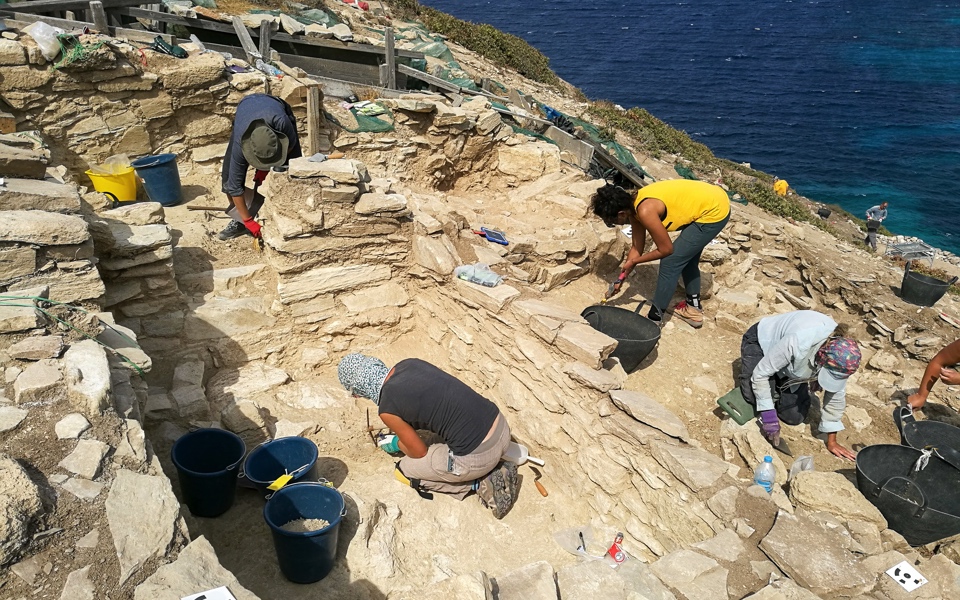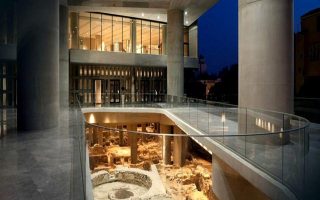Islet off Naxos reveals signs of advanced ancient architecture

An uninhabited, seemingly drab landmass some 10 kilometers from the holiday island of Naxos in the Aegean, has yielded 4,600-year-old structures that provide evidence of ancient Greece’s early history being far more complex than experts once believed.
On the islet of Daskalio, just off the coast of the uninhabited island of Keros, archaeologists have discovered the ruins of a pyramid-shaped compound – believed to be a prehistoric sanctuary – that stood shimmering atop its summit, visible to seafarers several kilometers away.
The up to 60 buildings that formed the compound were composed of more than 7,000 tons of white marble that had to be transported from the bigger island of Naxos on small wooden boats, leading researchers to believe that the area’s early inhabitants carried out at least 3,500 missions to bring the materials to Daskalio.
The University of Cambridge, in collaboration with the British School at Athens, began excavating the site in 2015 as part of a Keros-Naxos Seaways research program. Since then, archaeologists have unearthed broken sculptures and vessels but nothing as monumental as their most recent discoveries.
Finds from Daskalio will be on display on the nearby island of Ano Koufonisi from Saturday.
“One of the unique features of this site is the way that metalworking seems to be a feature from the very beginning until the end,” Michael Boyd, co-director of the project, said in a recent press release. “Metalworking on this scale presumes a constant supply of raw materials from the western Cyclades or Attica, and social structures that allowed for learning and maintaining esoteric technical skills.”
Research shows that Keros did not have the means to support the complex structures. Rather, most of the construction material likely had to be imported from nearby islands.
Among the most significant finds is an intricate drainage system that covers the entire islet, as well as stone stairways and large entranceways. The existence of the compound suggests a type of political entity that organized labor as early as the 26th century BC.
Data analysis also shows that the compound was likely built in a span of only 20 to 40 years, making it one of the most impressive feats of engineering in the Cycladic Bronze Age.
“The intricate, interconnected and multi-level architecture gives a clear impression of a planned and well-built settlement,” the University of Cambridge’s press release said.
Though excavations at the site date back several years, it has only been through data analysis in the past year that researchers have uncovered the incredibly complex nature of the prehistoric sanctuary.
Constructed in the same period as Stonehenge and the Pyramids of Giza, the discovery indicates that the early inhabitants of Greece were influenced by a global trend of architectural innovation. During this time, pyramids were starting to become spiritual symbols in Egypt, and it was also during this time that Egyptian influence first became apparent in Crete.





